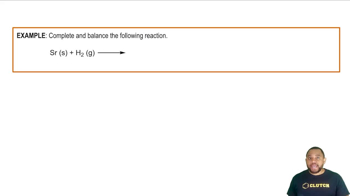Here are the essential concepts you must grasp in order to answer the question correctly.
Nonstoichiometric Compounds
Nonstoichiometric compounds are materials that do not have a fixed ratio of their constituent elements, meaning their composition can vary. This variability often arises from defects in the crystal structure, such as vacancies or interstitials, which can lead to different ratios of elements than those predicted by simple stoichiometry.
Recommended video:
Crystal Structure
The crystal structure of a compound refers to the orderly arrangement of atoms within a crystalline solid. In nonstoichiometric compounds, the presence of defects or irregularities in this structure can disrupt the ideal ratios of elements, resulting in a composition that deviates from the expected stoichiometric formula.
Recommended video:
Examples of Nonstoichiometric Compounds
Common examples of nonstoichiometric compounds include metal oxides like FeO and TiO2, where the ratio of metal to oxygen can vary. For instance, in iron oxide, the presence of iron vacancies can lead to a composition that is not strictly 1:1, illustrating how structural variations can affect stoichiometry.
Recommended video:
Hydrogen Compounds Example

 Verified step by step guidance
Verified step by step guidance


